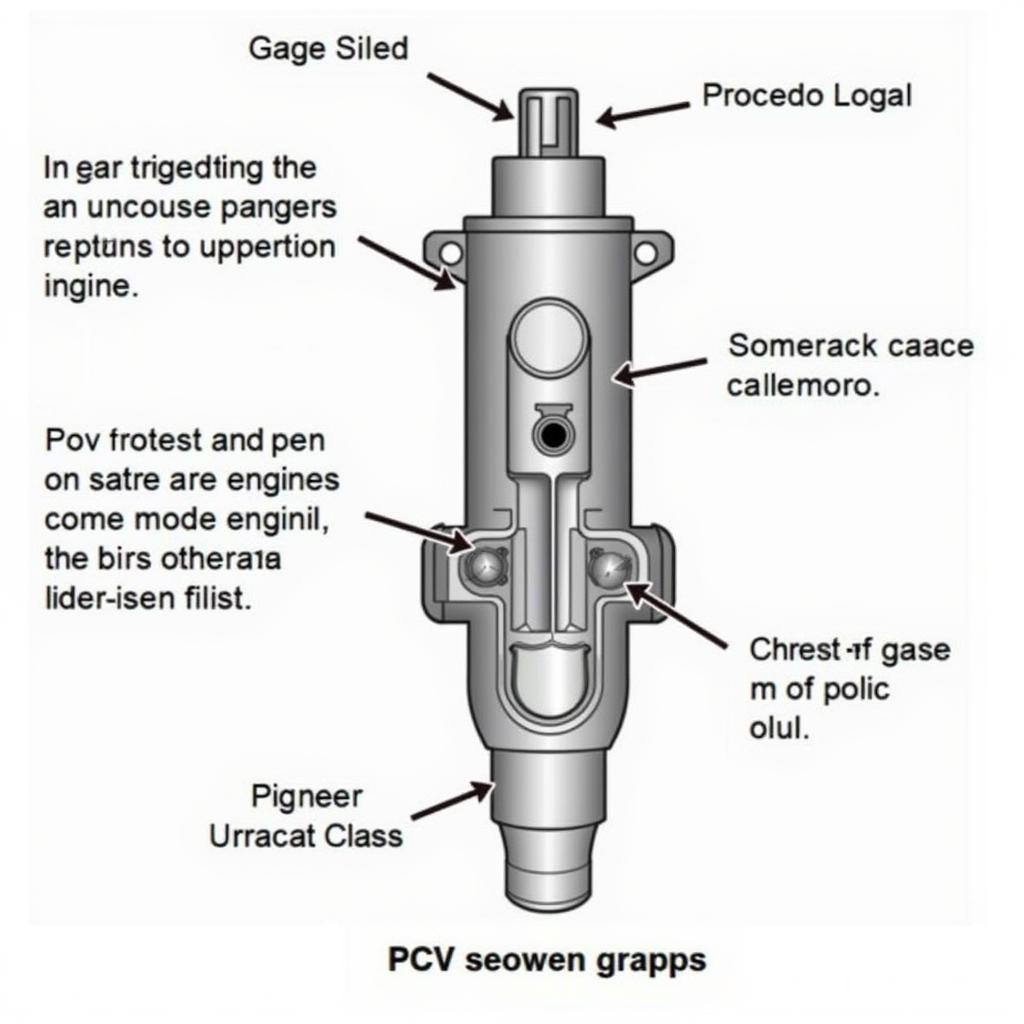Seeing a puff of blue smoke when you start your car can be alarming. This usually indicates your car is burning oil, a problem that needs addressing sooner rather than later. While a complete fix usually involves a mechanic, there are some quick fixes you can try for “car burning oil smoke on start up.” Let’s dive into some potential causes and solutions.
Understanding Why Your Car Burns Oil on Start Up
Several issues can cause your car to burn oil, particularly upon start-up. These range from simple fixes to more complex engine problems. Identifying the source is crucial for effective troubleshooting. Common culprits include worn valve seals, piston rings, or a faulty PCV valve.
Worn Valve Seals: A Common Culprit
Valve seals are designed to prevent oil from leaking into the combustion chamber. Over time, these seals can harden and crack, allowing oil to seep past. This often results in a puff of blue smoke on start-up, as oil pools in the cylinders overnight.
Piston Ring Problems: A More Serious Issue
Piston rings are responsible for sealing the combustion chamber and regulating oil consumption. Worn or damaged piston rings can allow excessive oil into the cylinders, leading to continuous oil burning and smoke. This is a more serious problem than worn valve seals and typically requires professional repair.
PCV Valve Issues: Easy to Check and Replace
The PCV (Positive Crankcase Ventilation) valve regulates the flow of gases within the engine. A malfunctioning PCV valve can create pressure buildup, forcing oil past seals and into the combustion chamber. Fortunately, checking and replacing the PCV valve is a relatively simple and inexpensive fix.
 A functioning PCV valve helps regulate engine gases and prevents oil burning.
A functioning PCV valve helps regulate engine gases and prevents oil burning.
Car Burning Oil Quick Fix: What Can You Do?
While a mechanic is often needed for long-term solutions, there are a few quick fixes you can attempt.
Check Your Oil Level and Top It Off
The most immediate step is to check your oil level. If it’s low, top it off with the correct grade of oil. This won’t fix the underlying problem, but it will prevent further damage from low oil levels.
Try a Thicker Oil
Switching to a higher viscosity oil (e.g., from 5W-30 to 10W-40) can sometimes temporarily reduce oil burning, especially if the problem is minor wear. This isn’t a permanent fix, but it can buy you some time. Consult your car’s manual for recommended oil viscosity.
Consider an Oil Additive
Certain oil additives claim to revitalize seals and reduce oil consumption. While results can vary, some users have reported success with these products. However, it’s essential to choose a reputable brand and follow the instructions carefully.
“Using a thicker oil or an oil additive can sometimes temporarily alleviate the symptoms of oil burning,” advises John Miller, a seasoned automotive engineer with over 20 years of experience. “However, these are not permanent solutions and addressing the underlying mechanical issue is crucial.”
When to See a Mechanic
If the smoke persists or worsens, it’s time to consult a mechanic. Ignoring the problem can lead to more severe engine damage and costly repairs down the line. A mechanic can accurately diagnose the cause of the oil burning and recommend the appropriate repair.
Conclusion
Seeing your car burning oil smoke on start-up can be concerning. While quick fixes like topping off the oil or using a thicker viscosity oil might offer temporary relief, a long-term solution requires addressing the root cause. Don’t hesitate to connect with AutoTipPro at +1 (641) 206-8880 or visit our office at 500 N St Mary’s St, San Antonio, TX 78205, United States for professional assistance. We can help you diagnose the issue and get your car back in top shape.
FAQ
- What color is the smoke when a car burns oil? Usually blueish.
- Is it safe to drive my car if it’s burning oil? It depends on the severity. Monitor your oil level closely and consult a mechanic.
- How much does it cost to fix an oil burning problem? It depends on the cause. A PCV valve replacement is relatively inexpensive, while piston ring repairs can be more costly.
- Can I fix an oil burning problem myself? Some minor issues, like a faulty PCV valve, can be DIY fixes. However, more complex problems require professional expertise.
- What causes white smoke on start-up? White smoke usually indicates a coolant leak, a different problem than oil burning.
- How often should I check my oil level? At least once a month, or more frequently if you notice any unusual symptoms.
- Can using the wrong type of oil cause burning? Yes, using incorrect oil viscosity can contribute to oil consumption.






Leave a Reply